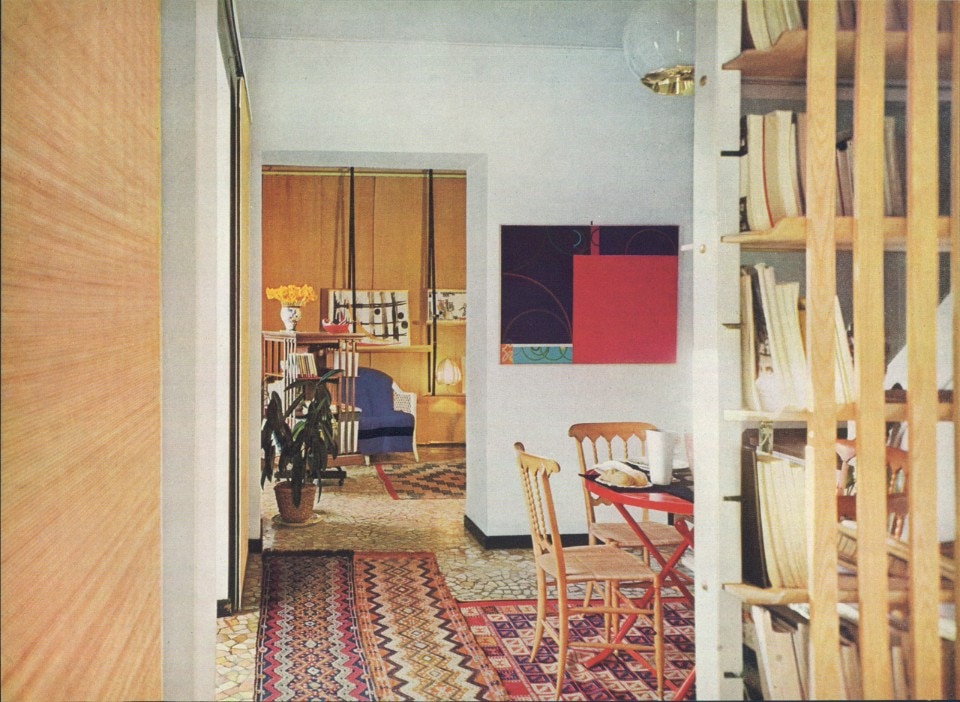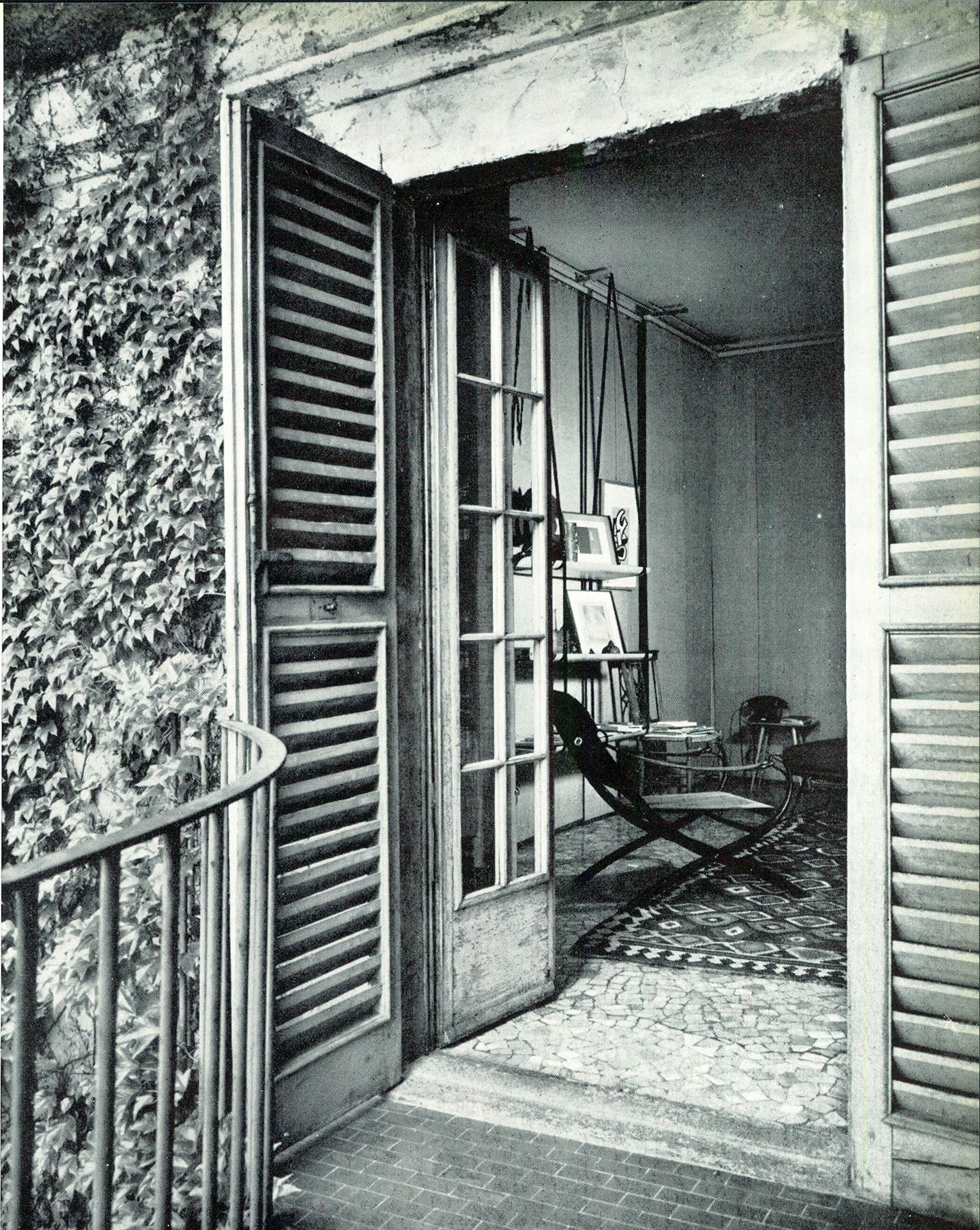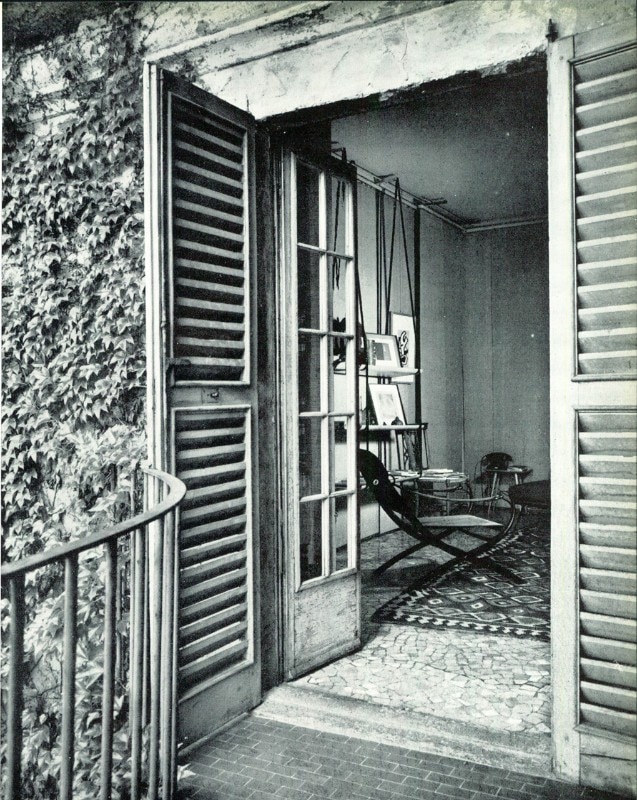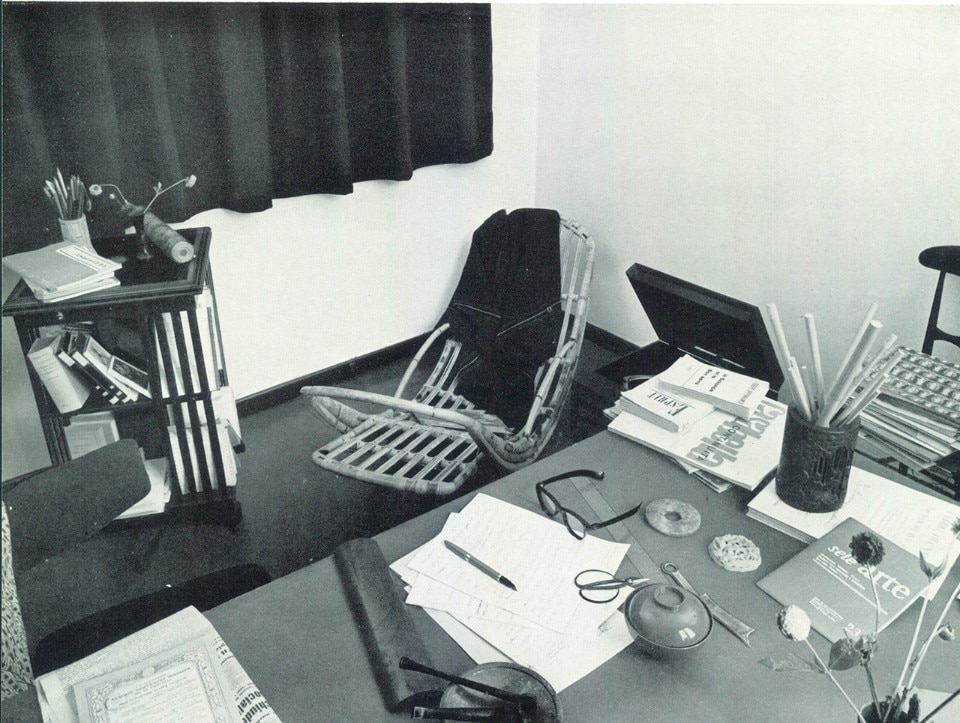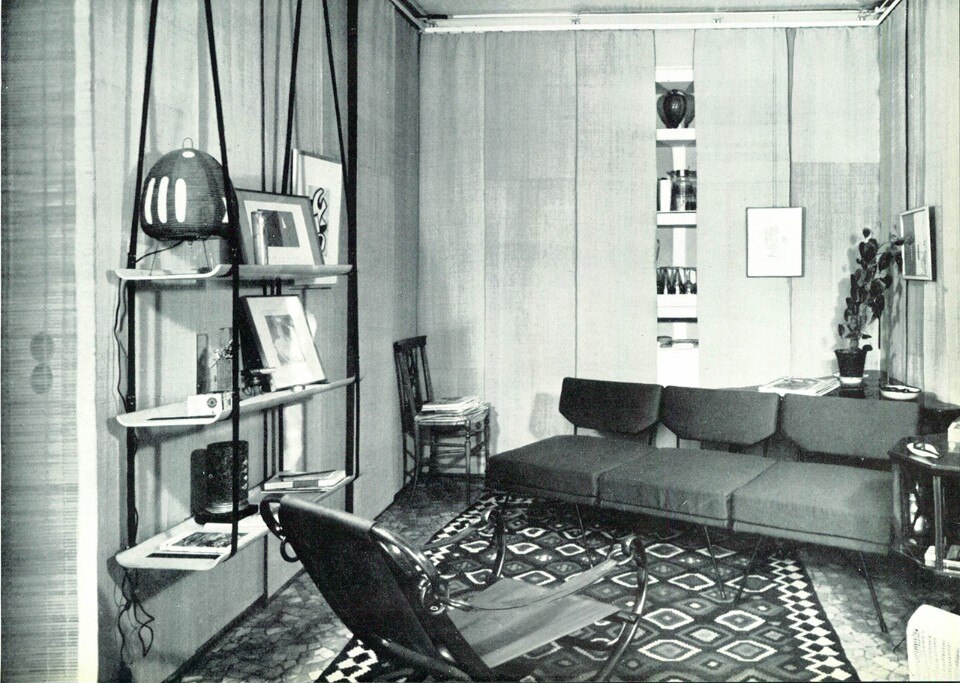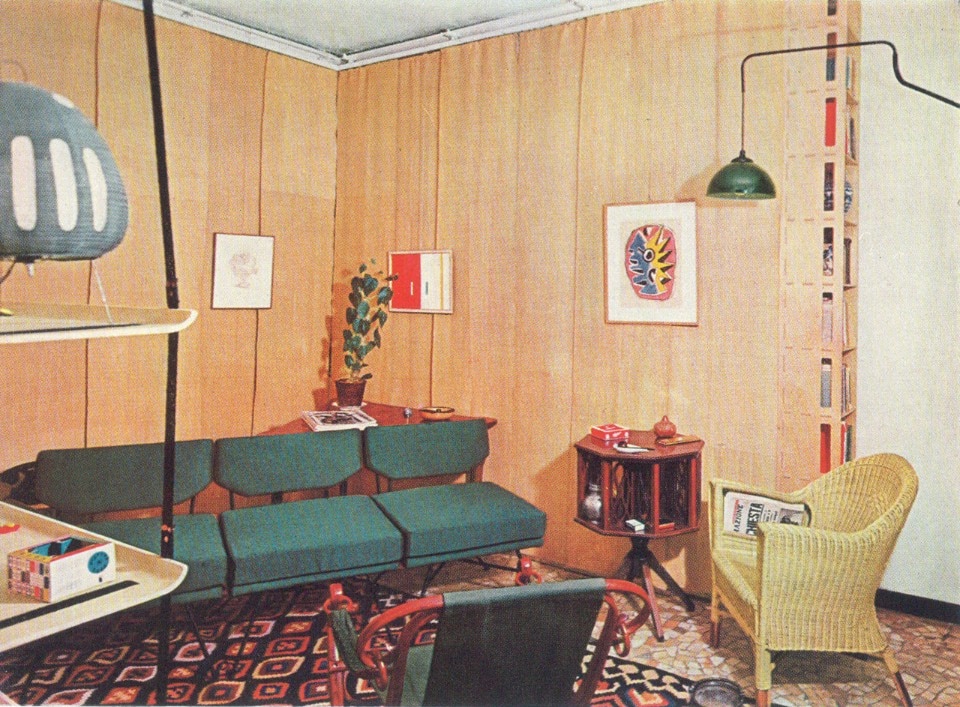In this period of long days spent in in the space of just a few square metres, we find ourselves examining our homes with unusual interest. We dust off the books and objects we have collected, a micro-world of magazines, pencils, shells, ceramics; simple symbols that tell of our travels and our relationships. Our homes are more a reflection of ourselves than we imagine. Gio Ponti wrote on this subject in one of the first ever editorials for Domus, in the Summer 1928 issue: “Don’t create your home according to fashion. Do it with intelligence and with loving culture” because “the home is the ‘vessel’ for your best and worst moments”. Thus, our homes are ourselves. And what about the homes of others? What do they tell us? With the column “At the home of...”, the Domus archive takes a peek into the homes of designers, to look at their tables, through their bookshelves, and into the “vessels” that they have created with their passions, their travels and their instincts.
The first appointment is at the home of Ernesto Nathan Rogers, in Milan. Pictures by Capogrossi and Calder, a Japanese lamp, a Chinese print over the bed, Madagascan mats and an old rocking chair in bent wood. The bookshelves hold Peruvian, Mexican and Brazilian objects, and pipes and scissors lie on the desk, together with magazines – architectural magazines, of course. Ernesto Nathan Rogers, architect and director of Domus in the period following the Second World War (1946 - 1947), lives in a nineteenth-century building in the centre of Milan. It is the home of a bachelor and globetrotter. The architect presented his apartment to the editorial team in Domus 326, from 1957, in the article “An architect for himself”.
Article published in Domus 326, 1957
This is the home that Ernesto Rogers, architect, recently fitted out for himself. It is located in a period Milanese building, and it is wonderful and unusual to hear the story told by the architect himself:
“My home. The home of a bachelor, like his life, is a little stunted, but in some cases, this can also be an advantage, due to the very characteristics of this way of life. There is in a sense a certain casualness, yet at the same time a clearly coherent message (perhaps a monologue?), uninterrupted by the tastes of others.
I spent twenty years living from hotel to hotel, and everyone told me that, being an architect, I should have a home of my own. The home that at last I have is not mine, but it is for me. I can’t understand how I managed to live as a nomad for so long, far from this shell that is now as essential to me as a suit and a pair of shoes.
I am lucky enough to live in an area of Milan that was dear to Stendhal, an author of whom I am particularly fond. When I read his work, I feel as though I am walking through my apartment. If he describes the gardens of Milan (glimpses of which I can see form my windows), it is as though he has come to visit me, repeating my everyday impressions in a wonderful manner.
I can’t understand how I managed to live as a nomad for so long, far from this shell that is now as essential to me as a suit and a pair of shoes.
It may at first seem incredible that for an architect it is much more difficult to design their own home than that of others, but in reality it is an exercise in concretising, in knowing oneself, which – clearly – is the most difficult and insoluble task that an individual can set themselves. There are no such things as ideal homes, other than those which we can realistically create. All the others are utopian. I thus sought to draw as much as possible on the objective facts that emerged in the creation of this project, to interpret them in my own way, in order to not experience them in a passive manner, but to possess and transform them, according to the practical requirements of my life, and its spiritual needs. When a building is constructed, the essential matter is to insert it into the pre-existing natural and historic environment. The same is true in furnishing a space, a process that should neither disregard does not characterise the building it inhabits, nor – when present – the natural landscape that echoes it.
The modernity – the contemporary nature – of a project lies in the personal values of its application. It is necessary to presume enough about oneself in order to be certain to interpret life in all its aspects. If I had had the opportunity to completely redesign the spaces in my home, I would have tried to create something that resembled what I found in this old building in the centre of Milan.
It goes without saying that the first negative limit (although actually rather positive overall) was set by a certain budget that I had to set myself in order to avoid satisfying all of my desires and lapsing into foolhardiness. In fact, I don’t own anything of any excessive value. Of my parents’ possessions, lost in part through the unfortunate circumstances of poverty, and in part through Nazi barbarity, little remains, in some way setting the tone for my own sentimental style. The rest are objects acquired on my many journeys to distant lands, or from the recesses of antique shops that I am led to by curiosity and my own professional duties. I am not particularly interested in technique, other than as a means to express poetic feeling, but I cannot stand anything that is produced badly. Despite their simplicity – and perhaps even due to this – the few items of furniture that I have designed require skill from their manufacturers. This is why I relied on Piero Frigerio from Cantù, who works with the love and knowledge of a traditional Italian artisan, and to whom I am once again thankful for having allowed me to create with precision the things that I had imagined.
The paintings are all gifts from the artists, demonstrations of their affection over the years. One day, as he browsed a bookcase full of Peruvian, Greek and Brazilian ceramics, a colleague jokingly said: “this looks like the home of an explorer”. I have never discovered anything, I have not even managed to discover myself yet, but I took this comment as a great compliment, as – at the very least – it corresponds to my secret dreams. However, naturally, in those dreams I am a much better architect”.
One day, as he browsed a bookcase full of Peruvian, Greek and Brazilian ceramics, a colleague jokingly said: this looks like the home of an explore.
Opening image: Ingresso della casa Di Ernesto Nathan Rogers, tratta da Domus 325 del 1957.


